
How to choose the best family car for you
'What to look for when shopping for a family car' in Australia.'
Browse over 9,000 car reviews

Look, we don’t want to scare you unnecessarily or tell you anything you already know, but driving is dangerous – like the-most-dangerous-thing-you’ll-do-in-your-life dangerous. It’s far safer to criss-cross the globe continuously on planes or swim every day at the beach with the sharks, than get in your car and drive to the supermarket. So what do you do? Stay at home? Walk? Nope, you buy the safest car you can afford.
If you’re buying an SUV, practicality is important (we’ve rated the top five most practical SUVs here), price is a major factor, and so is looks, but safety should be at the top of your checklist.
But how do you know how safe an SUV is? Sure you can go by the ANCAP star rating, but two cars scoring a maximum five stars aren’t always equally safe. And does a higher price tag always mean a safer SUV?
Fear not, we’ve picked out five of the safest new SUVs for you. We’ve delved deeper than the star ratings and looked at their individual scores and the crash results of its Euro NCAP counterpart, combined with the amount and type of advanced safety equipment they have on board.
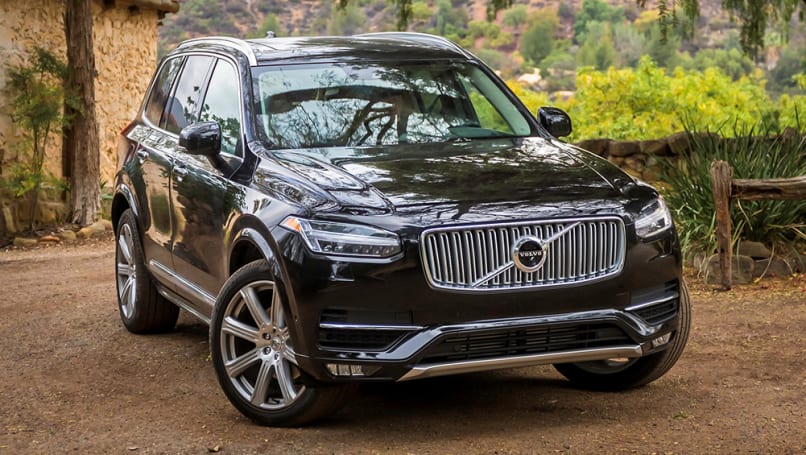
Volvo has been a safety pioneer since it came up with the world’s first laminated windscreen in 1944 and then went on to introduce so many safety firsts, from the three-point seat belt and crash testing to side airbags and AEB. Yup, safety is Volvo’s ‘thing’. Then in 2015 Volvo almost out-Volvoed itself with the second-generation XC90 large SUV.
In 2015 ANCAP gave the XC90 a score of 97 per cent for adult occupant protection, 87 per cent for child occupant protection, 73 per cent for safety assist, and 72 per cent for pedestrian protection. The XC90 was crash tested by Euro NCAP, and was awarded the 'Best in Class' title in 2015.
The AEB is focused on city driving with cameras and radar sensors able to tell the difference between a pedestrian, a cyclist, and another car.
Along with seven airbags (including curtain airbags which extend to the third row) there’s advanced safety equipment in the form of AEB (standard on all grades) and speed limit sign recognition. All grades from the second tier up have blind spot and rear collision warning, and cross traffic alert. A $2600 option adds adaptive cruise control and lane keeping assistance.
The AEB is focused on city driving with cameras and radar sensors able to tell the difference between a pedestrian, a cyclist, and another car. Brakes will be applied automatically to bring the car to a halt at speeds under 50km/h. Above 50km/h the system may not be able to prevent an impact but can slow the SUV by 15km/h.
The XC90 has a space saver spare wheel as standard. Now that might not mean much to you now, but if you get a puncture out the 'back of Burke' you'll quickly find out that a space saver won't last long (often only 250km) and your speed is normally limited to 80km/h. In a country as vast as Australia with enormous distances between remote towns a full-sized spare tyre is a much better bet.
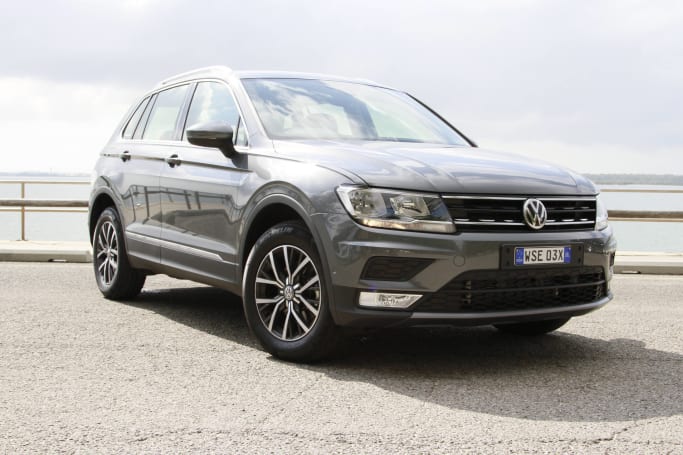
Proving that more money doesn’t always mean more safety, the new generation Volkswagen Tiguan mid-sized SUV arrived in Australia in 2016 armed to the grille with safety gear.
In 2016 ANCAP gave the Tiguan a score of 96 per cent for adult occupant protection, 84 per cent for child occupant protection, 68 per cent for safety assist and 62 per cent for pedestrian protection. The Tiguan was crash tested by Euro NCAP in 2016 and was awarded the 'Best in Class' title.
What’s outstanding is the array of advanced safety equipment which comes standard on even the entry grade Tiguan.
The five-seat Tiguan has seven airbags (curtains covering front and rear) and a reversing camera with multi-angle views. But what’s outstanding is the array of advanced safety equipment which comes standard on even the entry grade Tiguan. We’re talking city AEB, lane keeping assistance, auto parking and a fatigue detection system – excellent 'safety for money' on an SUV that lists for $31,990. Some high end brands wrap up these features as an optional package and charge you thousands.
An optional driver assistance package for $2000 adds yet more safety equipment such as rear cross traffic alert, adaptive cruise control, 360 camera and blind spot warning.
The AEB is specifically for city driving and will automatically apply the brakes to avoid a collision at speeds below 30km/h.
The Tiguan also has a space-saver spare wheel.
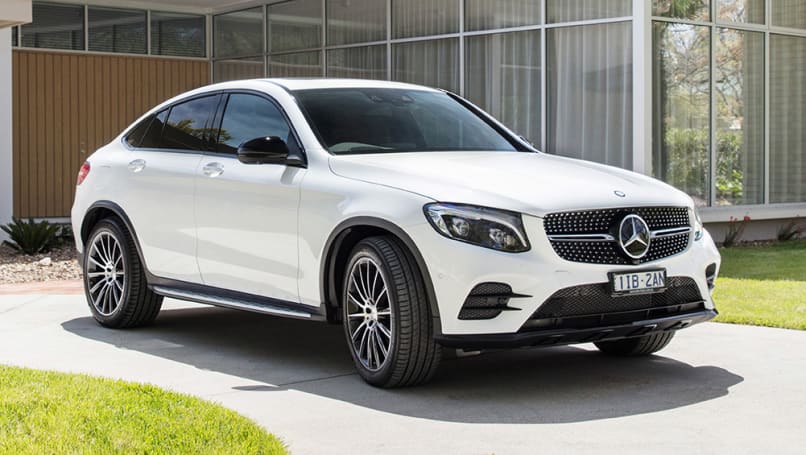
Another Euro NCAP 2015 Best in Class winner, the Mercedes-Benz GLC mid-sized SUV, is one of the most affordable and safest models the German brand sells.
Arriving in Australia in 2015, ANCAP gave the GLC a score of 95 per cent for adult occupant protection, 89 per cent for child occupant protection, 71 per cent for safety assist, and 82 per cent for pedestrian protection.
The GLC has nine airbags, including side air bags in the back which protect the chests of the rear passengers.
The GLC 250 and 250d come standard with AEB, adaptive cruise control, blind spot monitoring, steering assistance and cross traffic systems. The AEB is really for urban environments and works for both pedestrians and other cars.
The GLC uses sensors, radars and camera to ‘see’ completely around the car and work with the safety systems.
The adaptive cruise control is exceptional, operating up to 200km/h and bringing the vehicle to a complete stop until traffic moves away again.
The GLC uses sensors, radars and camera to ‘see’ completely around the car and work with the safety systems.
A ‘Pre-Safe’ feature identifies understeer, oversteer and emergency braking and will prepare the vehicle for a collision via a range of adjustments, from tensioning the seat belts to closing the windows.
The GLC comes with run flat tyres instead of a spare wheel or inflation kit, which can save you the bother of changing a wheel, but limits you to a maximum travel distance of 80km at 80km/h.
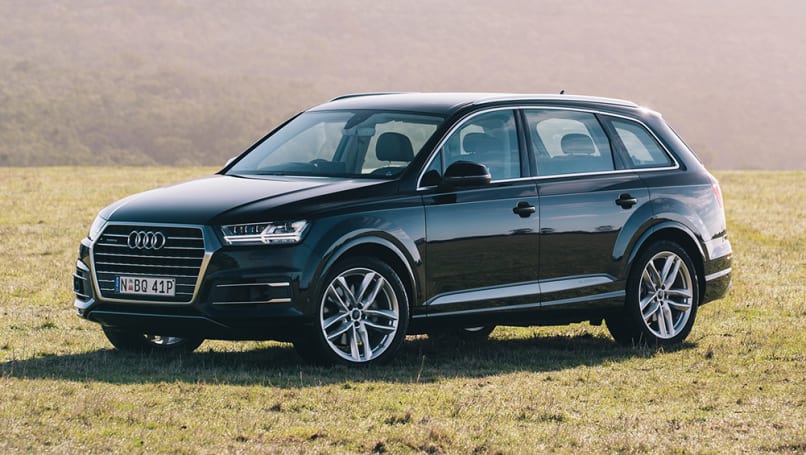
The second generation of Audi’s large Q7 arrived in Australia in 2015 and neither BMW’s X5 or Mercedes-Benz’s GLE have been able to sleep well since, because this large SUV is pretty great at everything, especially being safe.
ANCAP gave it a score of 94 per cent for adult occupant protection, while child occupant protection was given 88 per cent, safety assist 76 per cent and pedestrian protection scored 70 per cent. This Q7 was originally crashed tested by Euro NCAP in 2015.
The Q7 has eight airbags including side airbags that cover the third row. There’s a high level of advanced safety equipment such as city AEB which works at up to 85km/h to brake the car if the system detects an impending collision. At speeds below 40km/h the auto braking is more effective, and the system has a greater chance of a preventing a collision altogether.
Extra advanced safety tech can be optioned such as a night vision camera, which can help to spot pedestrians.
Also standard is the radar-based blind spot and rear cross traffic warning, plus a rear collision preparation system.
Extra advanced safety tech can be optioned such as a night vision camera, which can help to spot pedestrians, adaptive cruise control and lane keeping technology.
A tyre repair kit is standard on all grades of Q7. This involves an inflation kit and an adhesive 'goo' which seals the puncture. Problem is, if you've split the outside of the tyre the goo just oozes out through the hole and you still have a puncture. A space saver is optional, but again, you can't beat a full-sized spare.

At first we thought Toyota’s C-HR small SUV was just about those futuristic looks, then when we reviewed it we were blown away with its ride and handling, but just look at its safety systems, too.
ANCAP gave the C-HR a score of 87 per cent for adult occupant protection, 77 per cent for child occupant protection, 68 per cent for safety assist and 65 per cent for pedestrian protection. Those are good results for a car which lists for about $30K.
Armed with seven airbags, all grades of the C-HR also come with city AEB, adaptive cruise control, lane departure and blind spot warning, rear cross traffic alert, reversing camera and auto headlights.
There are many much more expensive SUVs which don't have anywhere near this array of safety gear as standard.
That’s an extraordinary amount of advanced safety equipment for an SUV of this price and it comes on every grade of C-HR - not just the top-of-the-range version. There are many much more expensive SUVs which don't have anywhere near this array of safety gear as standard, and Toyota should be commended for showing that safety doesn't have to cost a fortune - particularly seeing as this car will be bought by younger people.
You might have noticed, however, that the safety assist score is a bit low, this is because ANCAP marked the C-HR down for its AEB not working below 20km/h.
The C-HR also has a space-saver spare wheel.
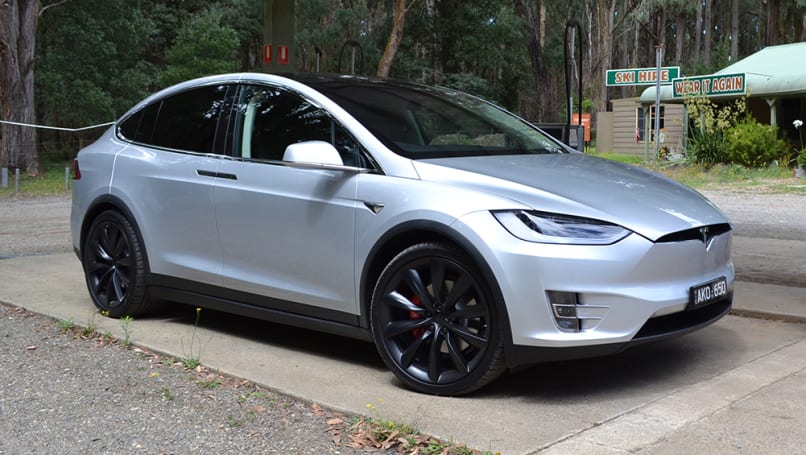
The Tesla Model X all-electric seven seat SUV hasn’t been crash tested by ANCAP or Euro NCAP, but the signs suggest it could be an excellent safety performer.
Not only is it padded with 12 airbags, when its latest self-driving software is rolled out the Model X will be fully autonomous. That makes stuff like simple AEB look as cute and antiquated as a horse and carriage. Hang on a second, a horse and carriage is also fully autonomous. Hmmm...
What safety features do you look for in an SUV? Tell us what you think in the comments below.
Comments